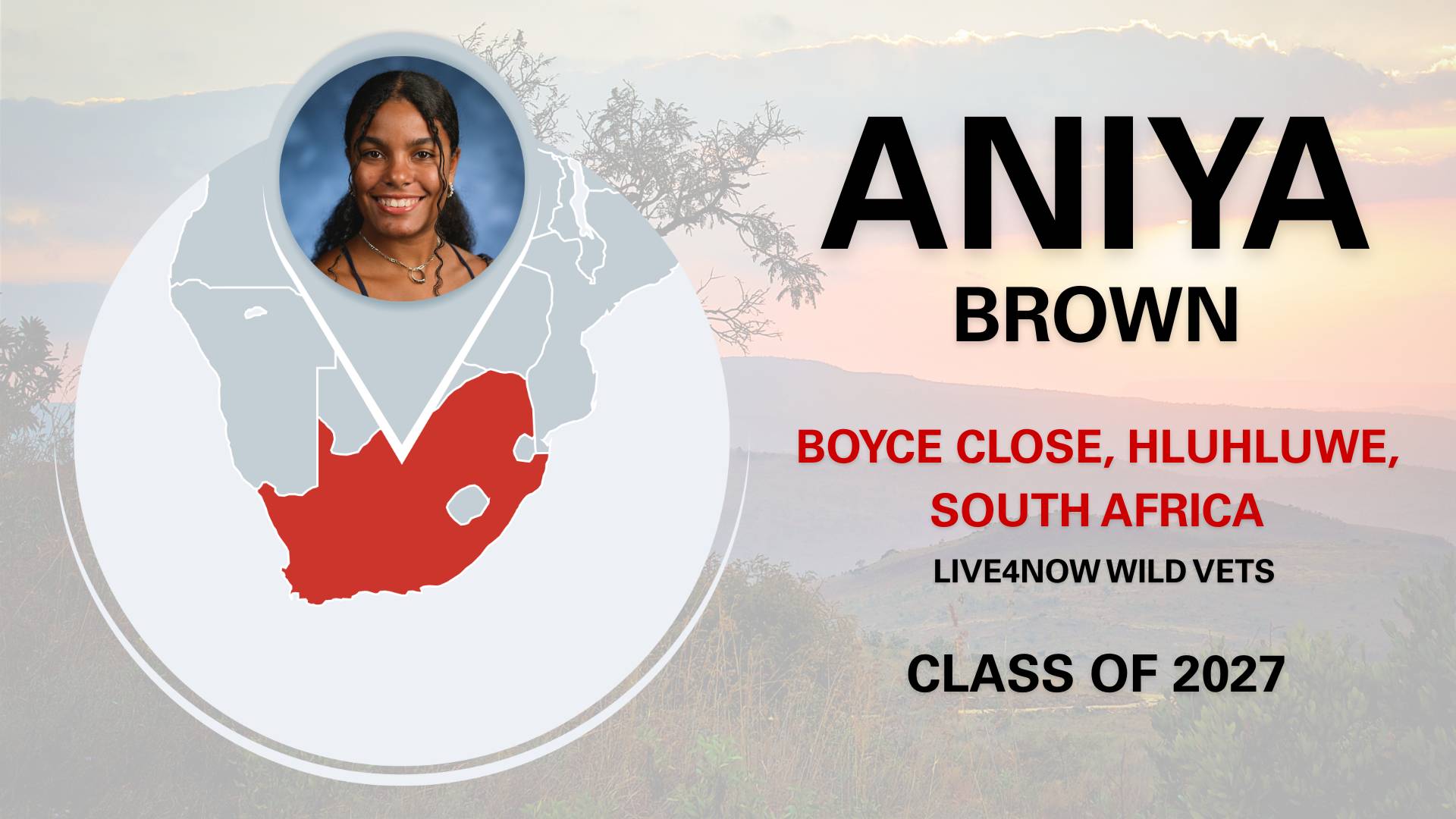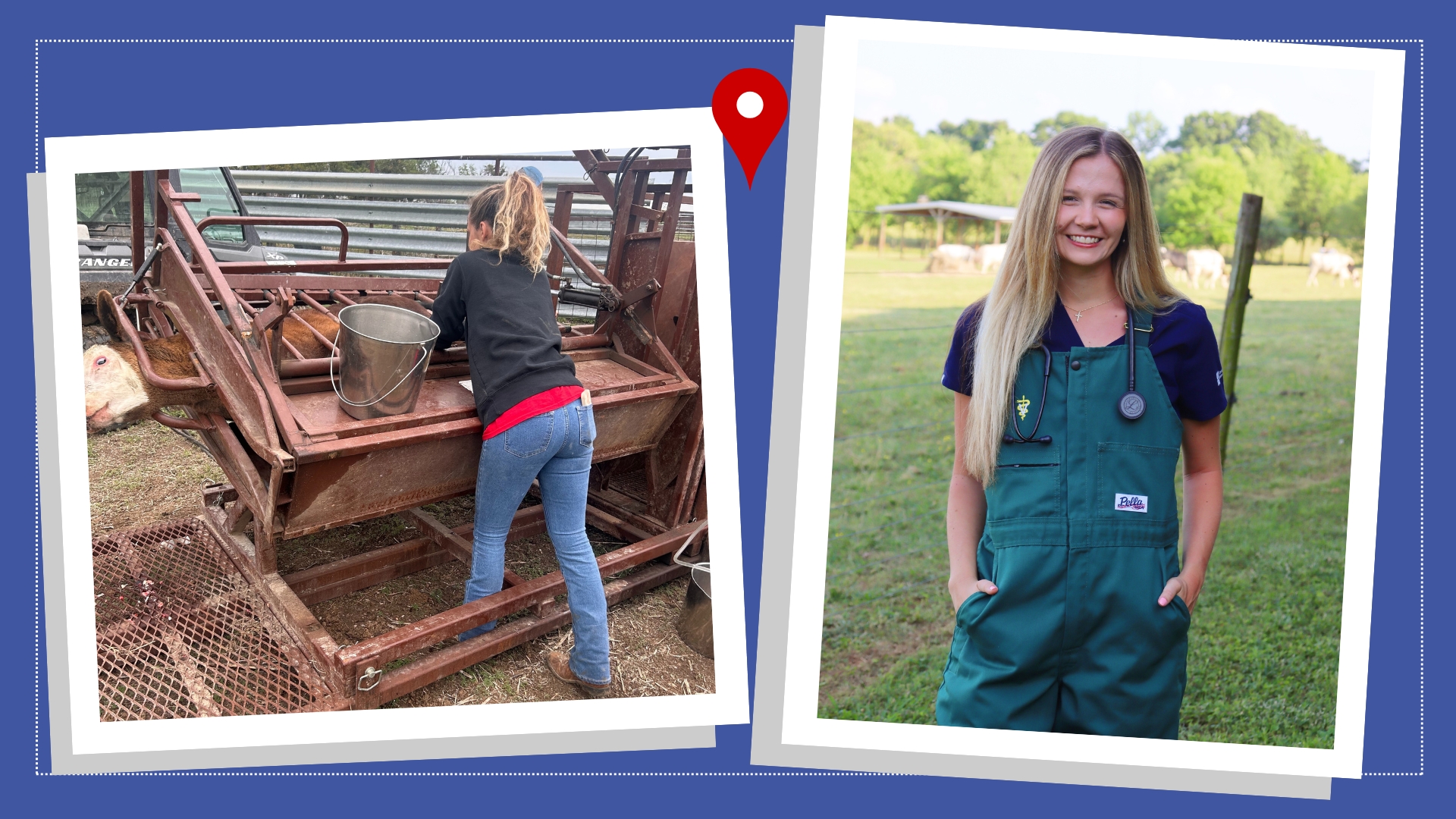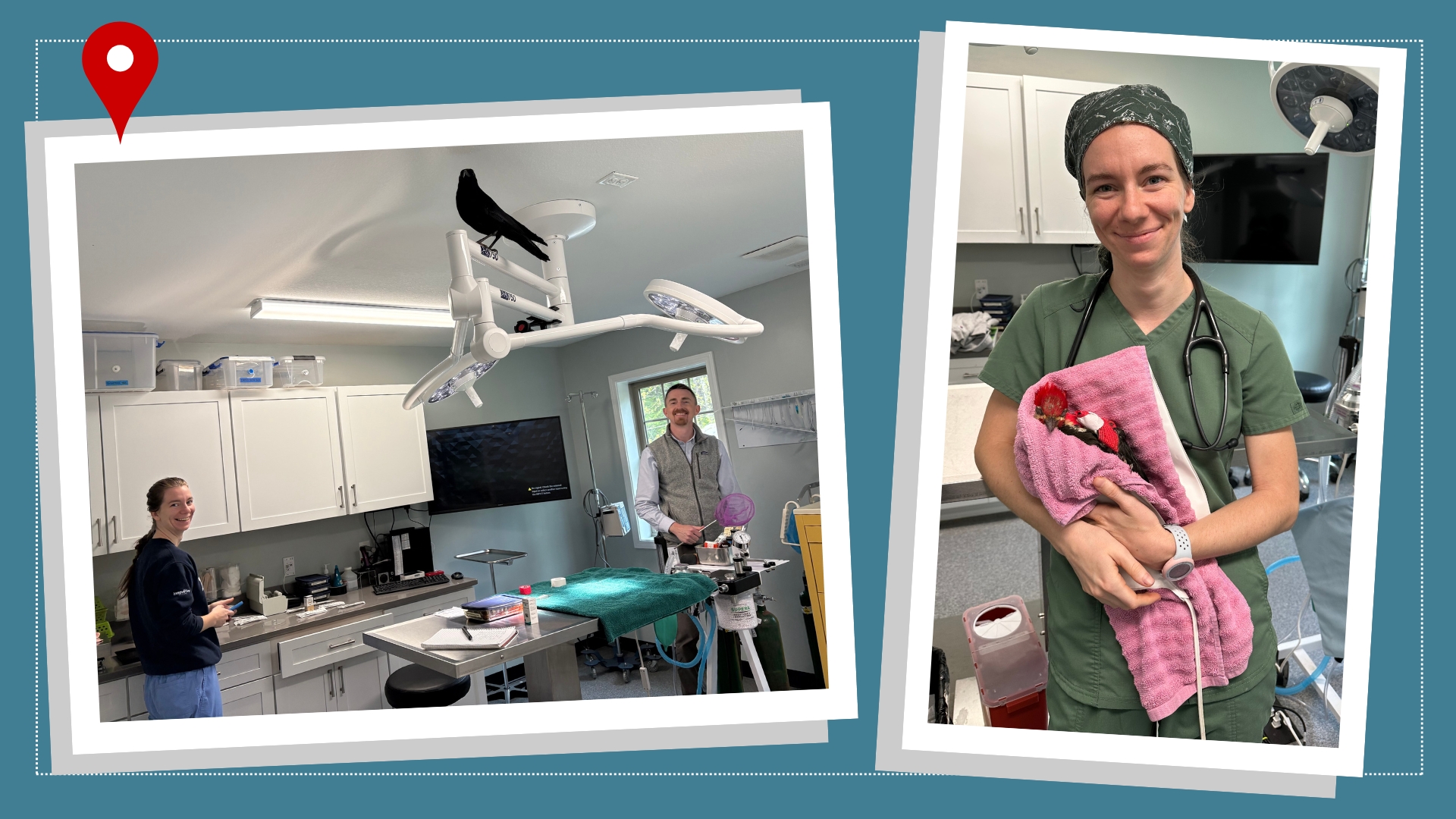From Peru, Eris Mihelic Reports on Rainforest Work
Eris Mihelic, NC State College of Veterinary Medicine Class of 2027, is an Alabama native and Harvard graduate. She is spending three weeks in Peru volunteering with the Rainforest Awareness Rescue Education Center, an animal rehabilitation center and wildlife sanctuary in the heart of the Peruvian Amazon.

FINAL WEEK
My last week in the Amazon started with a visit to a local aquarium that also serves as the Amazon Research Center for Ornamental Fishes. The aquarium was filled with fish found locally in the Amazon River and was arranged to mimic the flow of water, with exhibits highlighting the river’s different ecosystems, from the banks into more open water and eventually out into the ocean. While there, I also learned about the research and work they do to protect the ornamental fish of the Amazon and about the children’s character they created, Nalda, and her macaw sidekick, Eduardo. Nalda transforms from a pink river dolphin into the princess of the Amazon and is used to teach local children about the importance of conservation.
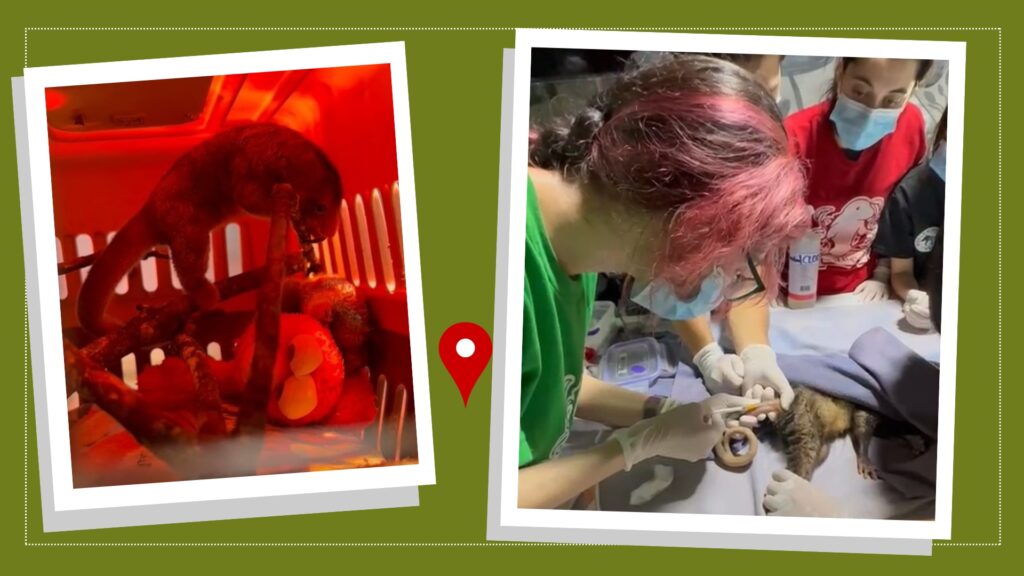
The rest of the week was filled with procedures and check-ups on some unique animals. I had the opportunity to help monitor anesthesia during a tail amputation for a wooly monkey who was injured in a fight with a troopmate and then participated in his subsequent wound management throughout the week. We performed check-up exams on Meraki the oncilla, one of the smallest wild cats in the Americas, a mata mata turtle, a freshwater turtle native to the Amazon riverbanks, and a titi monkey that had a minor wound on one of his hands.
Animals that come through RAREC are often categorized by whether they are on a soft release plan, meaning they will be gradually reintroduced into the wild after a long time in captivity, or a hard release plan, meaning they have spent a shorter amount of time in captivity and can be released directly into the wild. This week, I got to participate in the hard release of two animals at RAREC. The first was a silky anteater, the smallest species of anteater, which reaches only about a foot and a half in length, with most of that length consisting of its prehensile tail. The silky anteater was kept at the center for a day for monitoring, and then that night, we hiked about 20 minutes into the forest surrounding the center to find an appropriate place to release it back into the tree canopy, as they are an arboreal and nocturnal species. The second animal release was of an opossum that was found in the enclosure of one of the ocelots. The opossum was treated for hypoglycemia for a day and was rechecked before being released the following night.

I feel like I truly got to experience the breadth of diversity the Amazon has to offer throughout my three weeks at RAREC. I learned so much about the various animals of the rainforest as well as the intricacies of caring for and rehabilitating wildlife. I also feel like I got to witness the One Health approach in action, which is a concept that has been emphasized in many of my classes at the NC State College of Veterinary Medicine. One Health is the idea that environmental health, human health and animal health are all interconnected. RAREC helps with environmental health by running weekly classes to teach local youth about environmental conservation, cares for human health by minimizing the spread of zoonotic diseases through the deworming and sterilization of domestic animals in local villages and cares for animal health through the rehabilitation of the many animals currently at the center.
Getting to put the skills I have been learning to use in such a unique environment was a very rewarding experience. I am grateful to everyone at RAREC for being so welcoming and willing to let me take such an active role in the care of the amazing animals there. I leave Peru feeling even more certain that wildlife medicine holds a place in my future and carrying with me countless memories and only about 20 or so mosquito bites.
WEEK TWO
Eris Mihelic, Class of 2027, is an Alabama native and Harvard graduate. She is spending three weeks in Peru volunteering with the Rainforest Awareness Rescue Education Center, an animal rehabilitation center and wildlife sanctuary in the heart of the Peruvian Amazon.
This past week at RAREC has been filled with even more opportunities to implement the skills I’ve learned at the CVM in real cases. I used my knowledge about chelonians I gained from Turtle Rescue Team during our exam of Michelle, a yellow-footed tortoise. I assisted with Michelle’s venipuncture and then made and examined blood smears to evaluate her health status before her move to her pre-release enclosure.
I also used my experience serving as senior enrichment chair for the Carnivore Conservation Crew to create environmental and food enrichment for Paco the paca. Pacas are large rodents that typically live in densely forested areas of South America, so I helped to gather branches and leaves to put in Paco’s enclosure to make it resemble his natural habitat. Pacas are also burrowing animals, so I collected dried leaves for him to fortify his burrow with, and since in the wild he would forage for fallen fruit, I wrapped some of his food in banana leaves and scattered them around his enclosure to encourage his natural foraging behavior.
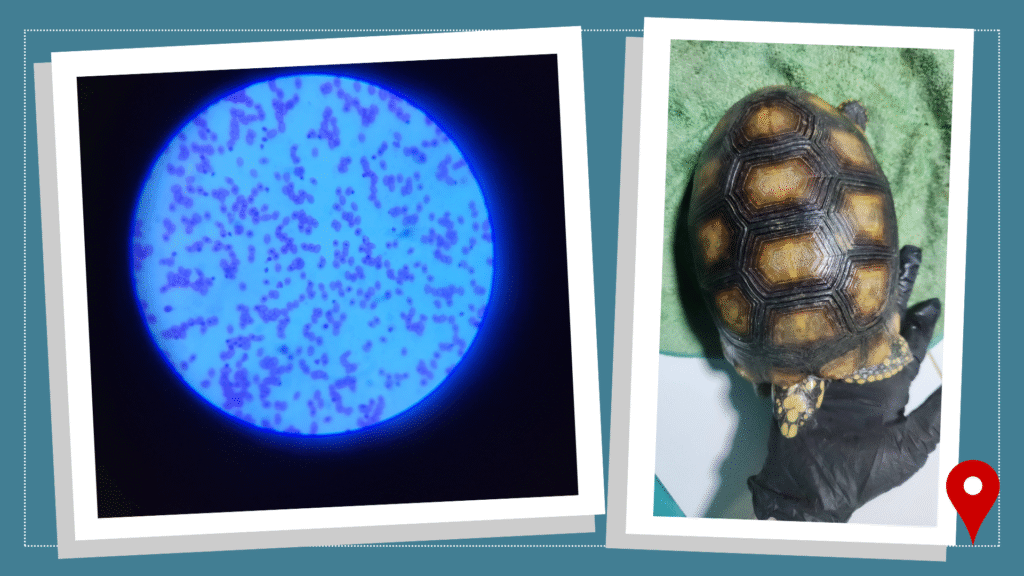
This week was also filled with many new experiences. I successfully drew blood on Maya, the blue and gold macaw who arrived at the end of last week, and assisted with the blood draw of the vulture whose leg pin we removed last week. We also started flight training for the vulture. This will help him build back up the muscles he will need for flying and surviving in the wild. As one of the vet assistants described it, “It’s his version of going to the gym.”
While I’ve spent a lot of time here at RAREC working with amazing animals, a good portion of my time has been spent in lectures. This week, we had a lecture about bird injuries, which was interesting because this is a subject we haven’t come to yet in the CVM curriculum, and we had a lecture about fluid therapy, which was a much-needed review and practice session calculating fluid rates and dosages. I also spent time this week researching liver and kidney disease in spider monkeys to assist the vet team with creating new protocols to use for their troop here. It was very cool to know that the work I was helping with would be used by the team at RAREC in the future.
I also went on more nature walks and even saw a rainbow boa, which is a species I really wanted to see during my time here. One day, a group of us at RAREC participated in Global Big Day, where people around the world record the birds they see and hear in their local area. We saw parakeets, a vulture, hummingbirds and even a couple of toucans.
As I enter my last week here, I am excited to see what is in store and already mourning having to leave the Amazon.
WEEK ONE
When I arrived in Iquitos, Peru, I traveled about an hour and a half outside of the city into the Amazon rainforest, and finally, after a long two days of travel, I arrived at the Rainforest Awareness Rescue and Education Center. RAREC is a nonprofit organization that has been working to rescue and rehabilitate local Amazonian wildlife for over a decade. It is the temporary home for many species, from manatees to woolly monkeys to Sonny the giant anteater, who has completed her rehabilitation and is soon to be released back into the wild.

In just a week, I have learned so much about the animals that call the Amazon home. I’ve also been able to work hands-on with several of these animals under the guidance of an experienced wildlife veterinarian. This week, we removed the pin from the leg of a vulture who was brought to RAREC due to a fractured femur, performed a recheck exam on Samara the ocelot and did an intake exam for a blue and gold macaw who was surrendered to the center.
I’ve found myself acting out NC State’s motto of “Think and Do” constantly throughout my first week here. All the information I’ve learned during my lectures has allowed me to understand the thought process behind various protocols and allowed me to keep up with the fast pace of the veterinary team. The selective I took my first year on avian anatomy and physiology and the cockatiel handling lab I attended through Wildlife Avian Aquatic and Zoological Medicine this year gave me the knowledge and confidence to be an active participant during the intake exam for Maya. Maya is a juvenile blue and gold macaw who was kept as a pet until her owners found keeping a wild bird as a pet too overwhelming and then surrendered her to RAREC. It was important to do a thorough physical exam on Maya to ensure there were no signs of malnutrition or injuries after being kept as a pet.
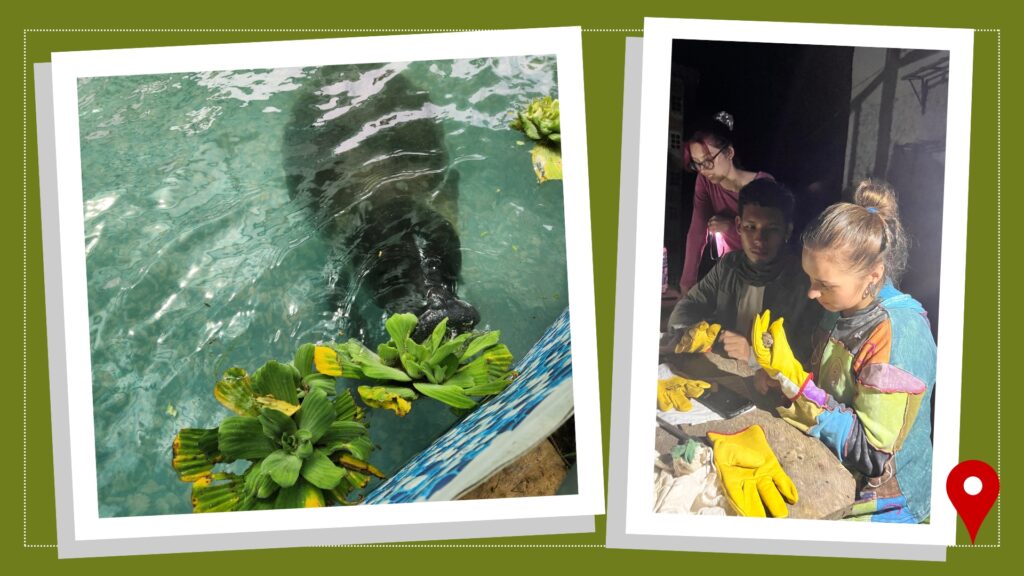
A large portion of my time has been dedicated to helping with the husbandry of the juvenile animals here at RAREC. This included feeding and washing the manatees, Maynas and Newt, and feeding and walking Neo, the baby two-toed sloth.
When I wasn’t in the clinic, I was busy immersing myself in Amazonian wildlife in other ways. This included taking an early morning boat ride on the Amazon River to spot pink river dolphins, walking the trails of RAREC at night to look for frogs and assisting the biologists at RAREC with their bat survey.
The passionate people who work at RAREC and the amazing animals here almost make me forget about the heat and the mosquitoes. Almost.
- Categories:
